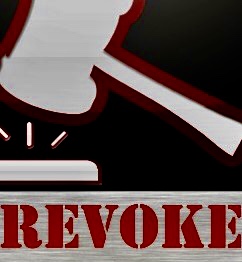Trevor Todd and Jackson Todd have over 60 years combined experience in resolving estate disputes including dealing with the removal of executors who have acted improperly.
Mahal v Mahal 2024 BCSC 1934 provided an excellent review of the law relating to the removal of an executor.
Courts may remove an executor-trustee under the following three authorities:
1. Section 158 of the Wills, Estates and Succession Act, S.B.C. 2009, c. 13 [WESA];
2. Sections 30 and 31 of the Trustee Act, R.S.B.C 1996, c. 464; and
3. The inherent jurisdiction of the court.
[24] While an executor or personal representative is someone who carries out the terms of a will; a trustee is a person who holds and caretakes assets for the beneficiaries, including for trusts that may arise in a will.
[25] The primary duty of an executor is to preserve the estate assets, pay the debts, and distribute the balance to the beneficiaries under the will or in accordance with any order varying the will: Rawji Estate (Re), 2023 BCSC 1652 at para. 32 [Rawji Estate].
[26] The two positions are, for practical purposes, often overlapping. Although they are distinct and there are separate provisions in the WESA or the Trustee Act that apply to each, in the context of applications to remove a person from acting in either of these two capacities, the tests for removal of an executor and of a trustee are substantially the same. The WESA and the Trustee Act do not vary the bases on which the court has inherent jurisdiction to remove or replace an executor or trustee: Chesko v. Chesko Estate, 2024 BCSC 394 at para. 51 [Chesko]. In essence, the court has the authority to remove and to replace a trustee, both by virtue of the Trustee Act and by virtue of its inherent jurisdiction, whenever such removal and replacement is necessary to the proper administration of the trust: Mardesic v. Vukovich Estate, 30 B.C.L.R. (2d) 170, 1988 CanLII 3125 (B.C.S.C.) at para. 18 [Mardesic].
[27] Sections 143(4) and 158 of the WESA clarify that an application to remove a person under both the capacities of personal representative and trustee must be made under both the WESA and the Trustee Act.
[28] Section 142(2) of the WESA lists duties of a personal representative as including administering and distributing the estate, accounting to beneficiaries and performing any other duties imposed on the representative by the will or law.
[29] The Trustee Act applies to matters relating to removal or substitution of that person as a trustee (see the WESA at s. 143). The court may give procedural directions regarding the administration of an estate pursuant to Rule 25-14(8) of the Supreme Court Civil Rules.
[30] A beneficiary may seek an accounting: see s. 99 of the Trustee Act; s. 142(2)(b) of WESA.
[31] An application may be made under s. 158(3) of the WESA to remove a personal representative. Section 159 requires, where the administration of the estate is outstanding, for the court to appoint a replacement personal representative.
[32] The parties also referred to the inherent jurisdiction of the court to remove a trustee. The respondent argues this inherent jurisdiction should be used sparingly.
[33] In cases considering the removal of an executor or trustee, courts must consider the need to protect the interests of the beneficiaries, whether leaving an executor or trustee in place is harmful to the estate, and the need to respect the testamentary wishes of the deceased: Fitzgerald v. Hill, 2022 BCSC 968 at para. 5 [Fitzgerald]. Consideration will be given to the best interests of the beneficiaries generally—and whether removal would be in their best collective interests: Nieweler Estate (Re), 2019 BCSC 401 at para. 31.
[34] The court must also consider whether the executor is capable of acting impartially with respect to the estate and the beneficiaries. Whether the trustee’s acts or omissions endangered the administration of the trust is also relevant: Carpino v. Carpino, 2022 BCSC 2237 at para. 51 [Carpino]. Not every actual or perceived conflict should lead to disqualification of a trustee or an executor: Conroy v. Stokes, [1952] 4 D.L.R. 124, 1952 CanLII 227 (B.C.C.A) at 126–127 [Conroy].
[35] The Court of Appeal for British Columbia set out the test for removal of an executor and trustee in Conroy. The main consideration is the collective welfare of the beneficiaries. As laid out in para. 11 of Dirnberger Estate, 2016 BCSC 439 [Dirnberger Estate], citing Conroy, there are several different categories of conduct which may lead a court to conclude that an executor or trustee should be removed:
1. endangerment of trust property;
2. want of honesty;
3. want of proper capacity to execute the duties of the office; and
4. want of reasonable fidelity.
[36] The test to remove a trustee is as set out in Conroy, ss. 158–159 of the WESA and ss. 30–31 of the Trustee Act: see Chesko at paras. 51–60. A minority beneficiary can get an executor or trustee removed if the test is met.
[37] The focus of the analysis must be the welfare of the beneficiaries, and could include evidence of necessity, for example that the executor’s acts or omissions endanger the assets of the estate.
[38] If the executor is unable to perform their duties due to incapacity, they may be removed. Where a significant amount of time has passed, an executor may be found to be unable to perform their duties if it is a non-complex estate and there are no reasonable grounds for the delay: Dirnberger Estate. In Dirnberger Estate, the estate had not yet been distributed for four years after the deceased died. The court found that the executor lacked necessary capacity as they had shown an inability to perform their duties as executor and were therefore removed.
[39] A level of discord, friction or hostility between the trustee and one or more of the beneficiaries is usually not sufficient, of itself, to justify the removal of the trustee: Miles v. Vince, 2014 BCCA 289 at para. 84. For example, in Fitzgerald, despite almost all the beneficiaries seeking to have the executor and trustee removed and a finding that the executor and trustee should have performed his duties in a more cooperative and open manner, Justice Coval did not order removal. He found no endangerment to the estate assets and that no preferential treatment or hostility interfered with the proper administration of the estate.
[40] Nonetheless, an executor’s hostility towards a beneficiary may be relevant if the hostility could interfere with the proper administration of the trust, and could be found to constitute a lack of reasonable fidelity: Dirnberger Estate at paras. 14 and 37. In that case, the want of reasonable fidelity consisted of unaccountable hostility, distain and mocking behavior towards a beneficiary, which made the current executor and trustee no longer suitable to serve in those capacities: Dirnberger Estate at paras. 32–37.
[41] Significant evidence of animus toward a beneficiary can support a finding that an executor is unable, unwilling, or reasonably unlikely to put the estate’s best interests first: Rawji Estate at para. 45. In that case, the executor had filed a notice of civil claim alleging various torts and seeking damages of over twenty million dollars against one of the beneficiaries of the estate. Although Justice Gibb-Carsley made no findings of the merits of the alleged torts, he found that the size and subject matter of the allegations against the beneficiary demonstrated hostility toward the beneficiary such that the executor would be unable to approach the executor role in an impartial manner: Rawji Estate at paras. 45–52.
[42] Where there is an actual conflict of interest, the assets of the estate may well be endangered or impaired and in such circumstances, removal of the administrator is necessary to safeguard the integrity of the estate: see Pangalia Estate, 2021 BCSC 1070 at para. 22. Conflict of interest on the part of the executor, either where the executor’s personal interest conflicts with the interests of the beneficiaries, or other beneficiaries if the executor is also a beneficiary of the estate, may be found to endanger the estate if the executor puts their own interests above the beneficiaries.
[43] In Rawji Estate, the executor was disqualified in part because he was in an actual or perceived conflict of interest between his personal capacity and his role as executor: at paras. 53–62. The conflict of interest was twofold. First, the executor had attempted to vary the will in both his personal capacity and his capacity as executor of the estate. Second, the executor was alleged to be indebted to the estate and there was at least some evidence that this was the case.
[44] A conflict of interest may also show a want of fidelity.
[45] Given the respect for a will-maker’s choice of executor, removing an executor or trustee must occur for good reason, where such intervention is “clearly necessary”: Mardesic; Chesko at para. 57.









